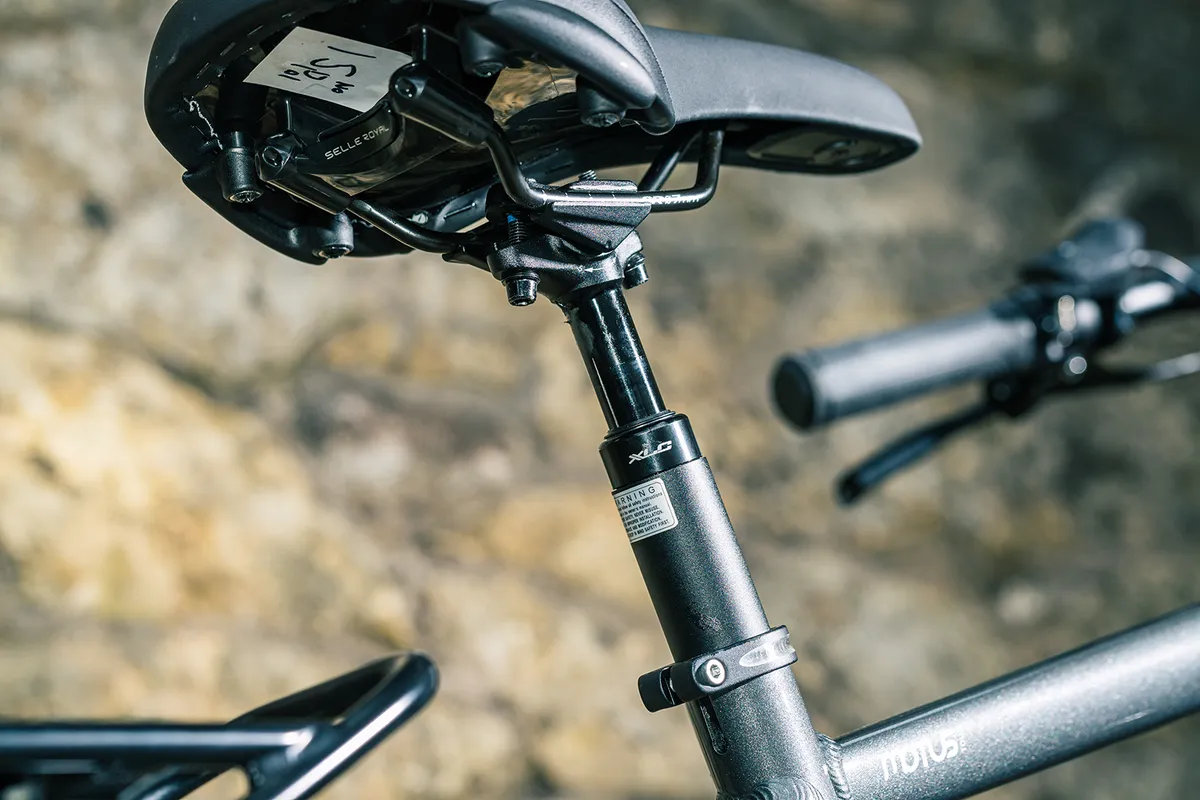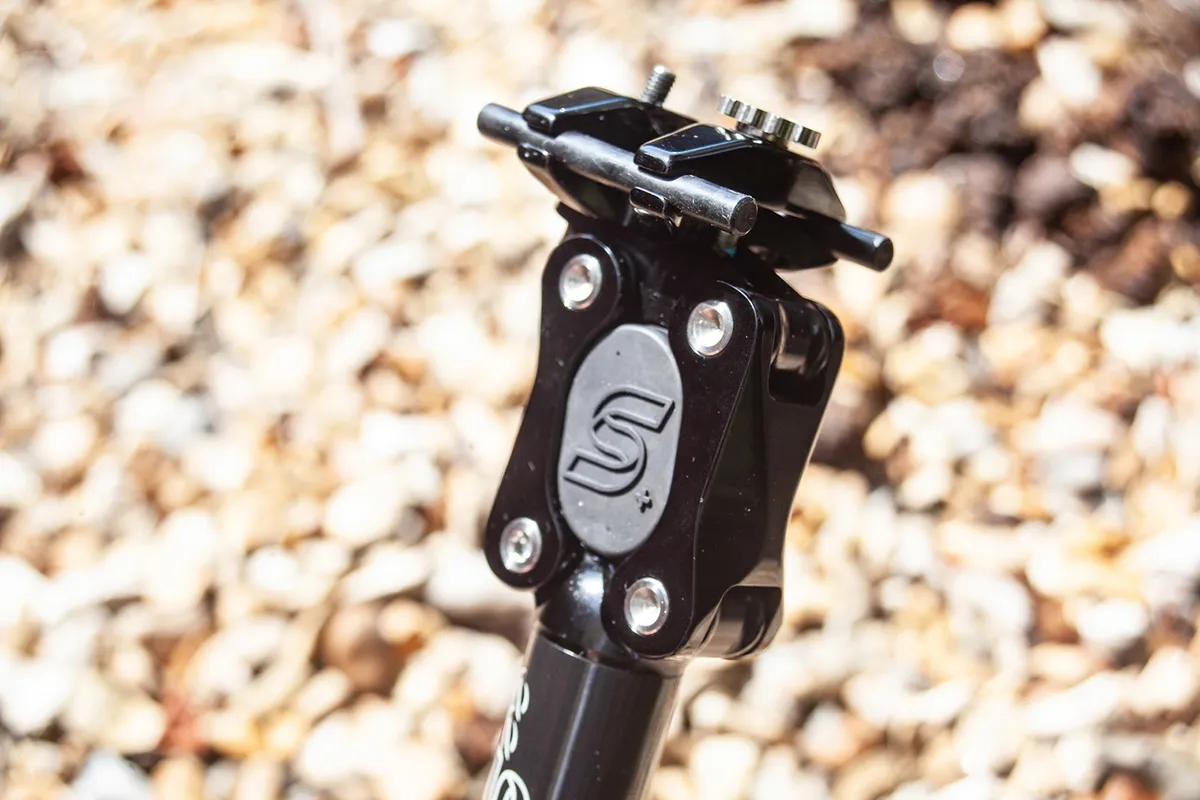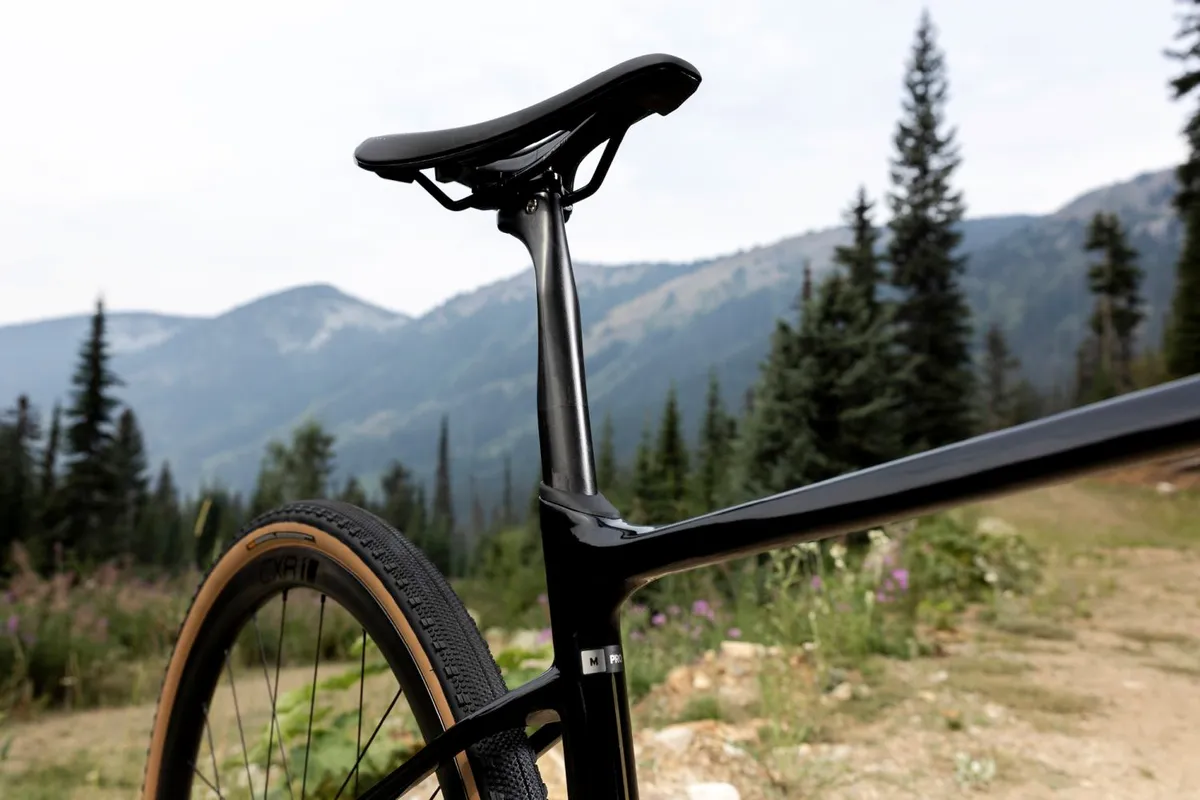The image suspension seatposts conjure in the minds of many riders might be somewhat outdated.
Older suspension seatposts tended to be basic, offering fairly crude damping.
However, nowadays, suspension seatposts are sophisticated components, employing the kind of tech you might see on a mountain bike fork, and they often come with bold claims about improved ride efficiency.
In this guide, we will explain what bicycle suspension seatposts are and how they work, their uses across different types of riding and whether you might benefit from one, as well as highlighting suspension seatposts that we've reviewed.
What are suspension seatposts?

The main job of a suspension seatpost is to absorb impacts and vibrations from the road, trail or path you're riding on. Naturally, you will only benefit from its performance when sitting in the saddle.
Suspension seatposts are becoming increasingly popular on gravel and all-road bikes, where riders cycle for hours over rough ground in a seated position.
Proper suspension seatposts use a telescopic design, like suspension forks or dropper posts, but they add a lot of weight and bulk to your bike.
But there are also seatposts that provide ride damping via a flex design. These seatposts are usually made from carbon, which is renowned for its flex properties.
The Ergon VCLS split shaft carbon seatpost, for example, is found on some Canyon bikes and offers a claimed 20mm of saddle movement, with a 238g weight.
Do suspension seatposts work?
Suspension seatposts provide vertical travel from telescopic designs, which work to smooth out bumps and lumps while riding.
When our reviewers have tested suspension seatposts, they have often been impressed by how effectively they work to smooth the trail, proving remarkably comfortable.
This comfort can limit the discomfort of any sudden impacts, but it can also reduce fatigue over long rides and improve pedalling efficiency.
However, the advantages of suspension seatposts are matched with a handful of drawbacks…
What are the pros and cons of suspension seatposts?
Pros
- Smoother pedalling on rough surfaces – riders looking to cover long distances on rough road surfaces will benefit from the increased comfort a suspension seatpost can bring.
- Potentially reduced fatigue and pain – vibrations and buzz from the road or trail can take their toll on your body. Suspension seatposts can help to alleviate this fatigue by absorbing vibrations.
- Enable you to stay seated for longer – suspension seatposts mean you can stay in your seated pedalling position over uneven ground, where you otherwise may have to stand, and this saves energy.
- A lightweight way of improving comfort – pedalling comfort can also be increased by speccing higher-volume tyres. However, this can come at the cost of extra grams and possibly a sub-optimum tyre choice, depending on your preferences. The lightest suspension seatposts weigh little more than a standard post, while bringing the benefits of a smoother seated ride.
Cons
- Cost – suspension seatposts can cost considerably more than conventional options.
- Weight – depending on what type of suspension seatpost you go for, you could be adding around 100–500 grams to your bike. Whether or not that’s a problem is up to you.
- Suspension bob – you may experience suspension movement as your weight naturally shifts up and down during pedalling. This bob will occur to varying degrees depending on the seatpost model and setup.
Types of suspension seatposts
Elastomer

Elastomer seatposts, such as the popular Cane Creek eeSilk, absorb impacts by using a solid rubber bumper that cushions a hinged linkage system. At 334g, the eeSilk is lightweight.
The elastomer compresses to absorb impacts travelling up through the seatpost, taking the sting out of bigger hits that a carbon flex design would not manage to dampen.
The action of the elastomer is relatively unnoticeable, thanks to its inherently slow rebound speed. This keeps suspension bob at bay and makes for a muted ride feel.
Elastomer designs have their downsides, though. Most notably, the rubber bumper itself can wear out over time and may need replacing. Another concern for riders in cold climates is the rubber bumper can firm up in very cold climates, so riders looking for performance in freezing conditions will have more luck with a different suspension seatpost design.
Coil spring

Similar to elastomer suspension seatposts, coil-spring suspension seatposts such as the Redshift ShockStop use a hinged linkage or stanchion tube system, but instead of impacts being cushioned by a rubber bumper, they're absorbed by a coil spring.
There are three versions of the ShockStop seatpost: Endurance, Pro Race and Pro Endurance. We've most recently tested the Pro Endurance, which can be tuned by swapping between hard and soft elastomer blocks and setting the preload.
Coil springs provide smooth impact absorption and excellent responsiveness. However, they are heavy and require a bit more setup than other designs to compensate for sag (the amount the spring sinks under your body weight).

Another elastomer/coil spring system that we've reviewed head-to-head with the Redshift is the USE Vybe GR, which provides 50mm of travel. You can choose between three elastomer stiffness options when buying, but can't subsequently switch between them.
The main benefits are the lower weight than the Redshift, 429g, and easier setup, although it's better suited to rougher ground than smoothing out surface buzz.
Air suspension

Telescopic air-suspension designs are still relatively uncommon. Their main advantage is their infinite adjustability, compared to coil or elastomer-sprung designs.
Suspension dropper seatposts are also making an appearance. These designs work like a conventional dropper post, with an extra bit of comfort.
Dropper suspension posts are a niche design, but popular with riders who want a bit of compliance from their short-travel gravel dropper post. The Rockshox Reverb AXS XPLR gravel bike dropper post, foe example, can be lowered slightly from its locked-out fully extended position to provide some suspension travel.
What about carbon flex seatposts?

While elastomer, coil- and air-sprung seatposts use complex designs to cushion your ride, carbon flex seatposts use a special design to flex vertically and dampen vibrations travelling up through the bike’s frame.
Carbon fibre is the material of choice because it can flex repeatedly to a certain degree without weakening.
While these seatposts don’t have any moving parts and can’t absorb bigger impacts, their damping properties can make a big difference on terrain where high-frequency buzz and chatter are prominent. They are also much lighter than other suspension seatposts and are popular on gravel bikes.
Popular designs in this category include the Ergon CF Allroad Pro. It was known previously as the Canyon VCLS (Vertical Comfort Lateral Stiffness) and was only available as a stock part on Canyon bikes, but you can now buy it for any bike.
Some aero road bikes are equipped with a carbon seatpost with a large cut-out section, which is designed to add saddle compliance. Examples include the Scott Foil and the Merida Reacto.
How to choose a suspension seatpost
If you're looking for impact absorption, rather than vibration damping, you will be best suited to an elastomer, coil or air-spring design.
Elastomer designs score with their muted performance, doing their job without adding any interference to how your bike feels.
Coil and air springs, on the other hand, benefit from smooth and reactive performance, but come at the cost of weight and setup complexity.
If you're looking for some extra comfort and relief from vibrations on tarmac or gravel surfaces, a carbon flex design is a great option that doesn’t add much extra weight, complexity or required maintenance to your bike.




